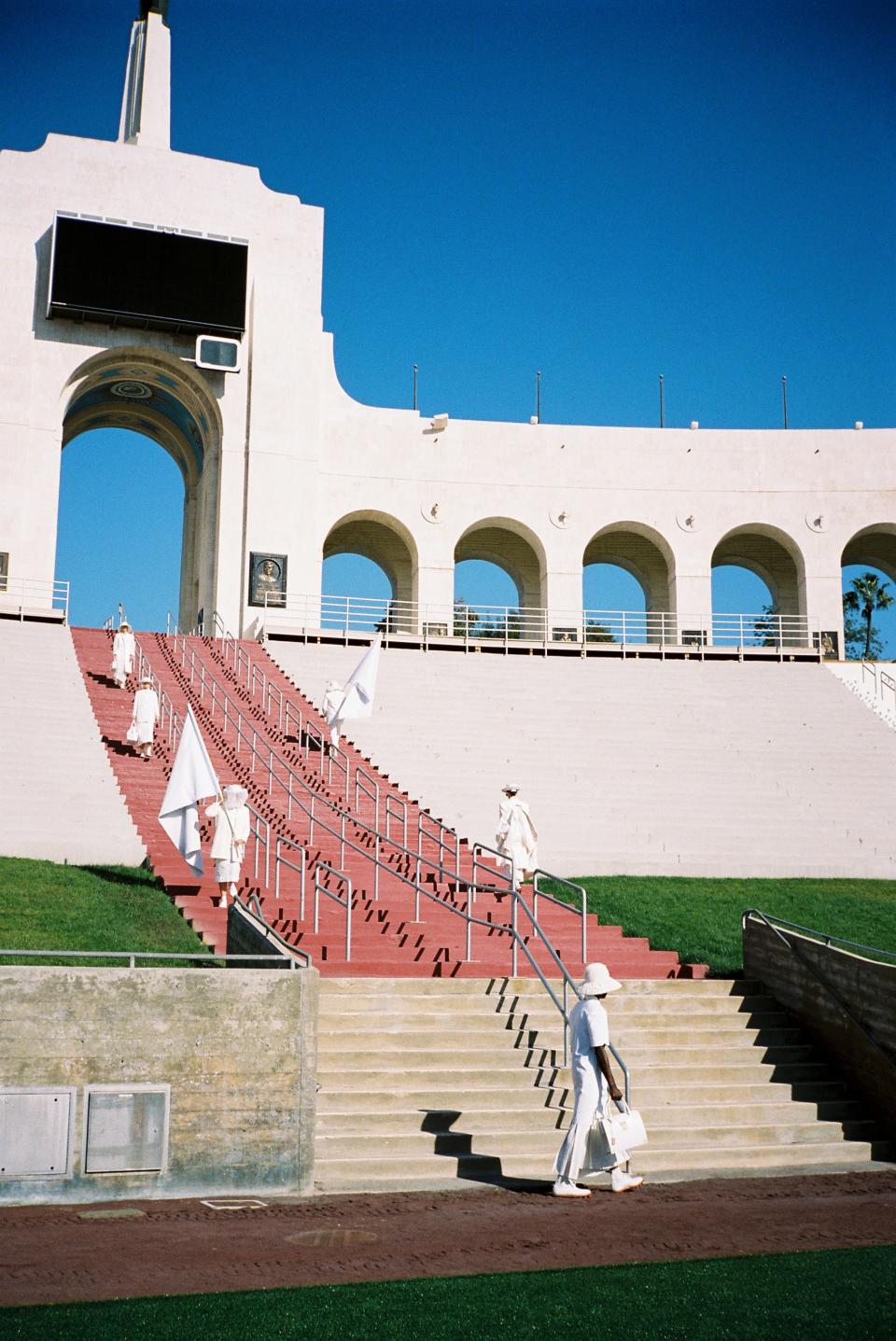Thom Browne Hosts Digital Paris Fashion Week Show at L.A. Landmark
Like almost everything else in 2020, Paris Fashion Week looks very different this year. Since the event kicked off on September 28, there have been some in-person shows with masked audiences, but many designers, including Thom Browne, have opted to go digital.
To showcase his spring 2021 collection (which includes both menswear and womenswear), Browne created a short film that transports the viewer far, far away from 2020 Paris. The collection of white sporty blazers, pleated skits, chunky knits, and beekeeper-esque hats “was really based on the early 1920s Olympics,” Browne tells AD. It is fitting, then, that the massive stairs at the Los Angeles Memorial Coliseum (which opened in 1923 and hosted the Olympic games in 1932 and 1984) served as the runway, and Olympic athletes (who would have competed in the 2020 Olympics in Tokyo had it not been postponed due to the COVID-19 pandemic) as the models.
Designed by father-and-son architects John and Donald Parkinson, the Coliseum is a National Historic Landmark, and though it was renovated in 2019, it still retains classic elements like a grand peristyle with arches.
To make things even more interesting—and perhaps to speak to the timelessness of the structure—Browne’s film is set 200 years in the future, with the Coliseum playing the part of a replica of itself on the moon. The spectacle is narrated by actor and Instagram comedian Jordan Firstman, who is best known for his viral impressions of inanimate objects.
Below, Browne tells AD a bit more about creating an out-of-this-world fashion show in the middle of a pandemic.
Architectural Digest: Were some of the challenges of putting the show together with the pandemic going on?
Thom Browne: Just logistically being able to do it. We had the very official COVID restrictions and the doctors and nurses on set for the entire shoot. Well, actually for our entire stay out in L.A., through casting and everything too. That was probably the most challenging. The rest of it was normal, kind of high-level production.

AD: When did you realize that you weren’t going to be able to have a regular fashion show this year?
TB: Early on in March I realized that it was going to be quite a while before I did things in person. So really through June and July for men’s and also in September for women’s, we just consciously as a company decided to move forward and think of how we were going to do things in a way that was responsible. So that meant figuring out how to create something digitally.
AD: How was this different from an in-person show?
TB: I feel like my shows are stories. Of course, they usually are in person. I thought it was the perfect time to take advantage of doing a short art film. The collection was really based on the early 1920s Olympics, the sensibility of the clothing stays true to that and also references the Olympic spirit. One of the most iconic Olympic venues is the L.A. coliseum. It was something that was doable, for one. And also architecturally it had strength and is an amazing location.
AD: How do you feel that the clothes and the architecture of the space play off of each other and complement each other?
TB: The architecture is very hopeful with how majestic it is. That is something I really wanted people to see within the collection. I think that is probably the most important message between the architecture and the clothing. The hope that you see through the film.## Heading
Originally Appeared on Architectural Digest

